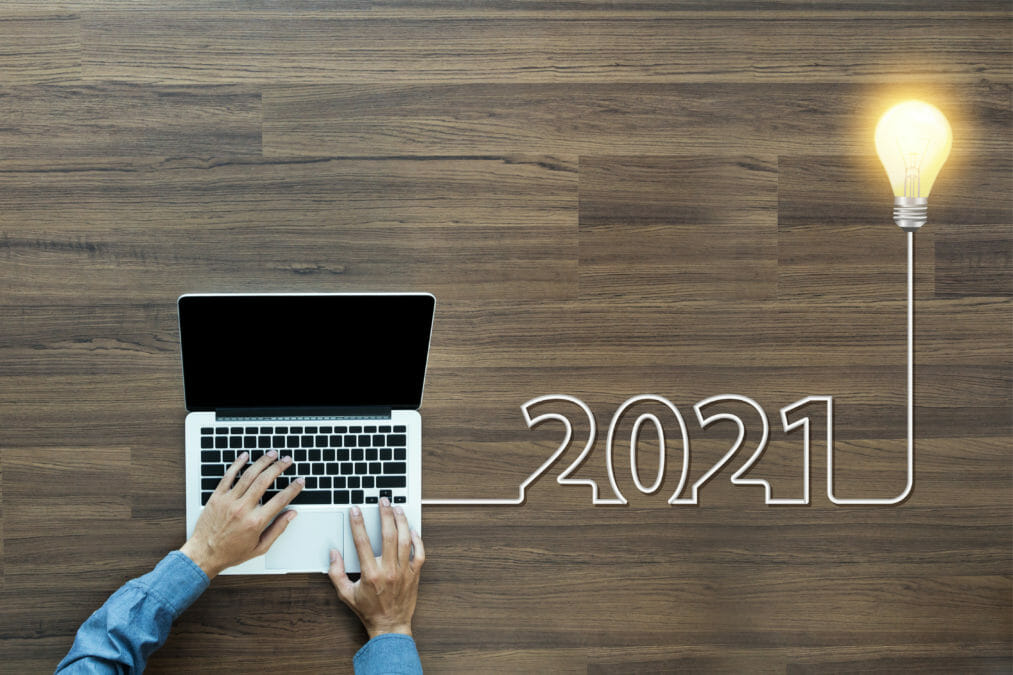2020 was a busy year for IT and digital overhaul. With lockdown putting business continuity at peril, remote working technology, cloud adoption and online services all proved to be vital assets to not only company infrastructure, but to the function of entire sectors.
However, after rapidly adopting numerous IT initiatives, businesses are now facing an entirely new set of challenges. Above all, organisations must look further than mere survival and focus on optimising IT investments, secure themselves from cyber-threats, and ensure that digital transformation efforts reflect the ever-changing parameters of the modern workplace.
This is all while ensuring that IT developments perform competitively within tight, post-pandemic budgets. With many expecting this year to be defined by a cautious return to optimisation and growth, how should businesses approach IT?
Rushed IT investments must be re-examined
The demands on IT in 2020 were historic. At the height of lockdown, 81% of IT professionals stated that Covid-19 was the biggest technology pressure their organisation had ever faced. This pressure meant that many businesses had little opportunity to consider the optimal approach to digital transformation. IT projects that would usually take years to be delivered were pushed through in months, long-term solutions were overlooked in favour of short-term fixes, and ongoing uncertainty led some companies to adopt new tech, perhaps too hastily.
The culmination of all this is that 76% of IT professionals are now expressing concern about the long-term impact of their own projects. Without proper foresight, businesses are finding themselves burdened with sluggish and outdated architecture, and this is spinning its own web of issues in terms of resourcing, workflow and competitiveness. Consequently, I predict that the coming year will see the return of a more considered approach to digital transformation. Having made the necessary initial steps to transform processes, they are now primed to be refined in 2021. Moving forward, it is imperative that business leaders and decision makers take the time to ensure business operations are optimised effectively.
5G will open a new world of potential
With transmissions speeds reaching ten gigabits per second, and latency less than 4-5 times that of 4G, 5G will first and foremost revolutionise IoT and innovative new edge computing services. With this comes the potential for the wider adoption of driverless cars and the remote control of complex industrial machinery, to name but two applications. These examples, however, are just the headlines.
Behind the scenes, 5G holds huge potential for businesses across all sectors looking to ramp up their digital capabilities. Lower latency and greater bandwidth mean that the finance and retail industries can perform data analytics in real-time, paving the way for AI to power bespoke customer service experiences. Similar applications will be seen in the manufacturing and transportation sectors, where faster information gathering and enhanced IoT offers both safer and faster execution of services.
The working environment will change
An even bigger area of flux is in the relationship between IT and the workplace. Last year’s shift to remote working was one of the biggest occupational overhauls in recent memory, and as it stands, more than four-fifths of global workforce are ruling out return to office full-time, creating new priorities for CIOs. This presents a new challenge for organisations, which must now act to make the office a more enticing place to work.
I anticipate, throughout the year ahead, we will see a shift to a hybrid business model that accommodates both physical and remote working. Companies should seek to optimise remote collaboration – this time between employees working from home and employees utilising office spaces — and organisations must ensure they provide the tech that enables this type of collaboration.
Preparing your IT strategy for 2021 — in the wake of Covid-19
Behavioural analytics will continue to offer crucial insight
The unfamiliar territory of remote working also pushed businesses to look further into behavioural analytics in 2020, a powerful resource that enables companies to better understand employee activities. One example is the Microsoft Office graph, which proved invaluable to some organisations last year. Companies also used tracking devices in their offices to provide insight into which offices were in use and which were empty, to help them think strategically and reduce their office footprint. Workplace analytics were also deployed, to track social distancing rules in meeting room environments and alert users on occupancy capacity — and ultimately they have helped to improve safety within office environments.
This technology offers extensive insights into people’s working patterns and shows how they engaged with the software they use daily. Combining tools like these with data sources, such as networks and meeting room devices, holds the potential to provide a comprehensive overview of how workers engage with technology. This in turn delivers insights around which tech investments are being maximised and which businesses can make savings on. I foresee this powerful combination being utilised more this year.
Businesses will take a more proactive approach to cyber security
At the core of these rapid developments is the increasingly crucial role of cybersecurity. As remote working grows, so will the number of devices; and, with many staff outside the protective ring of a corporate network, businesses are more likely to become cybercrime targets. 2020 saw a 23% increase in known cybercrime, with many experts saying that this number only scratches the surface.
The cause of this uptick is the rapid rate of digital transformation and the sudden adoption of out-of-office working. Recent surveys have indicated that 57% of IT leaders were not prepared for the safety ramifications of remote working, despite 88% making active changes to their cybersecurity protocols. This is a stark reminder of what industry leaders already know: unfamiliar digital territories lead to entry points and weak spots.
As businesses continue to embrace enhanced connectivity and extensive data handling in 2021 and beyond, they will — and must — look to rectify the mistakes of the past by supporting their investments with a forward-thinking approach to cybersecurity. I predict that in 2021 we will see huge investments made into automation and AI-driven security products to help gain some control to counter the ever-changing threat landscape businesses experience today.
2021 will bring the return of foresight
Digital transformation in 2020 was defined by urgency. Organisations brought IT development to the forefront of their operations out of necessity to survive, while growth and competition were put on the back burner. As we continue into the new year, businesses must draw upon their experiences of everything the last 12 months has brought — whilst ensuring they are planning for growth this year.
Put simply, the forthcoming year must see the return of foresight, after the rollercoaster that was 2020. CIOs must be able to make do with what they’ve got, as it’s unlikely they are seeing increased budgets during 2021.
Optimisation and strategy must be the initial focus as business leaders attempt to steady themselves following the turmoil of last year. After businesses have managed to overcome these challenges, they can then begin to capitalise on the new business appetite to change.








